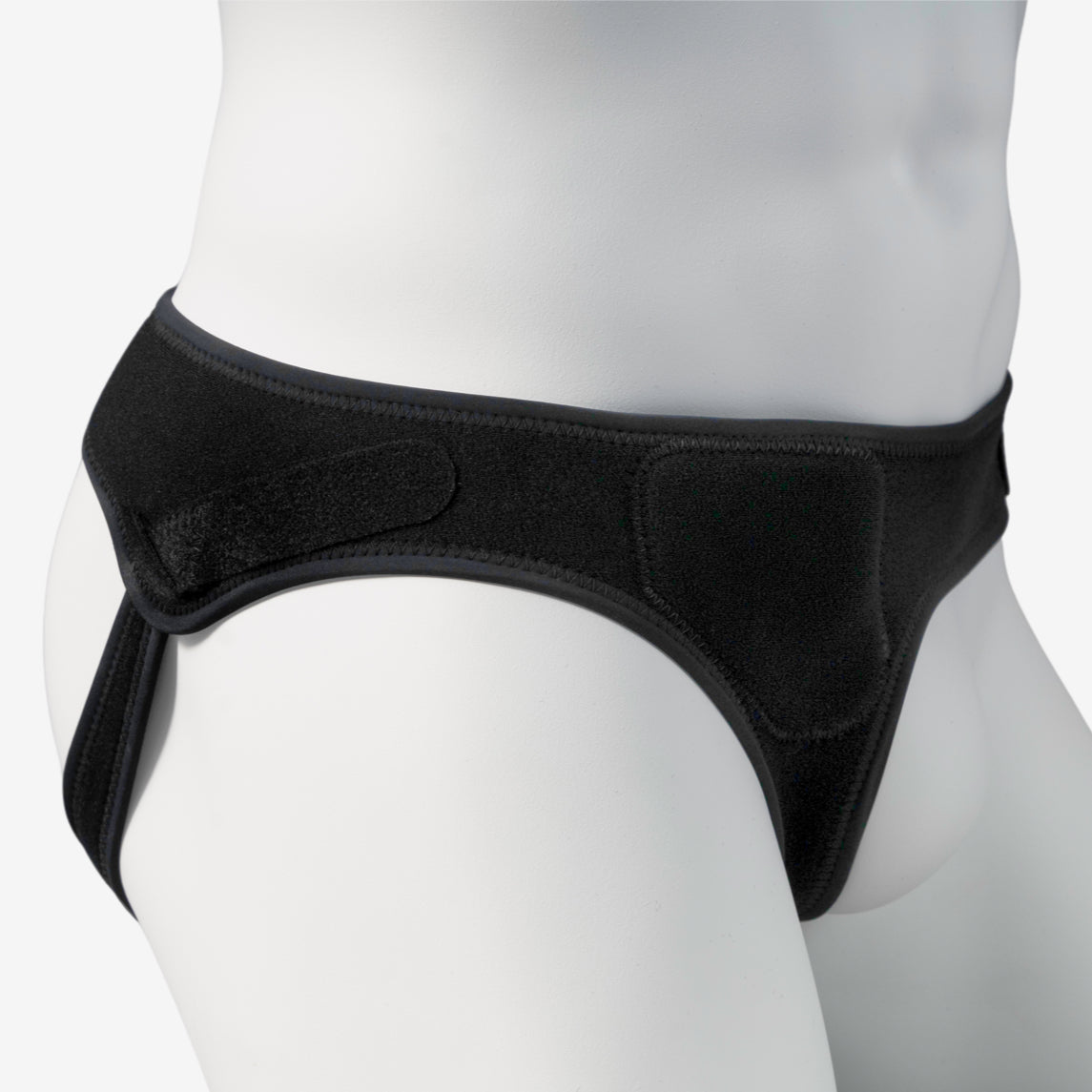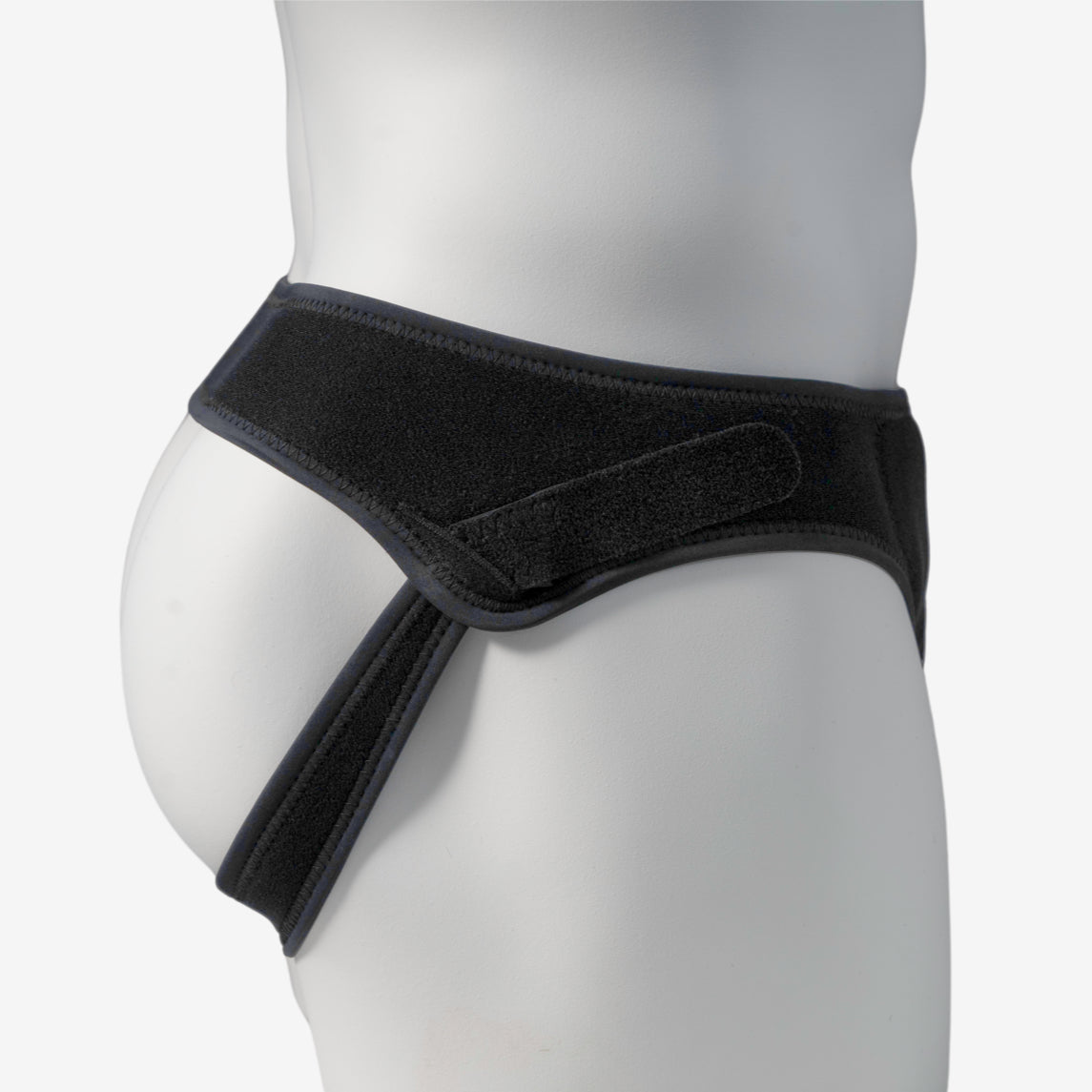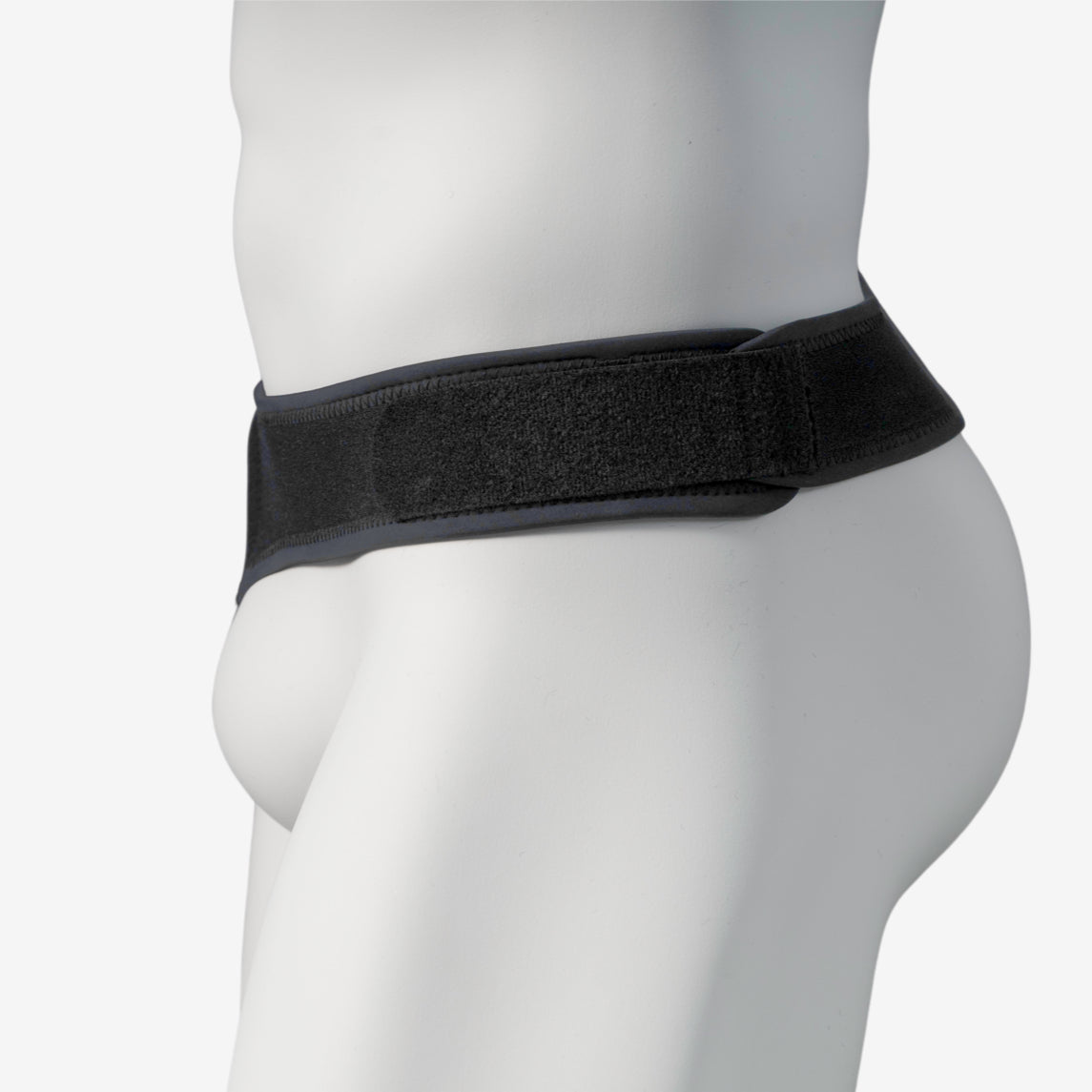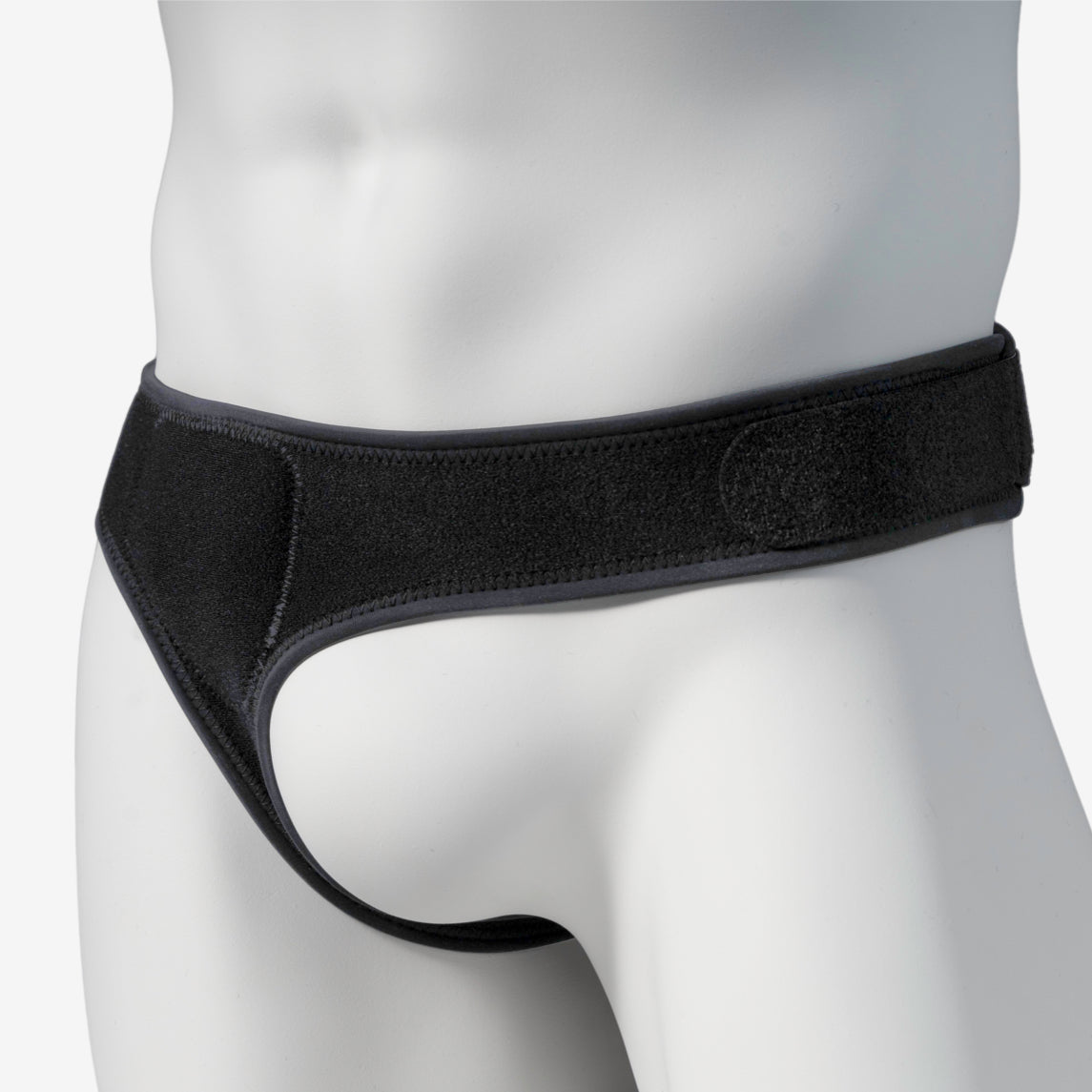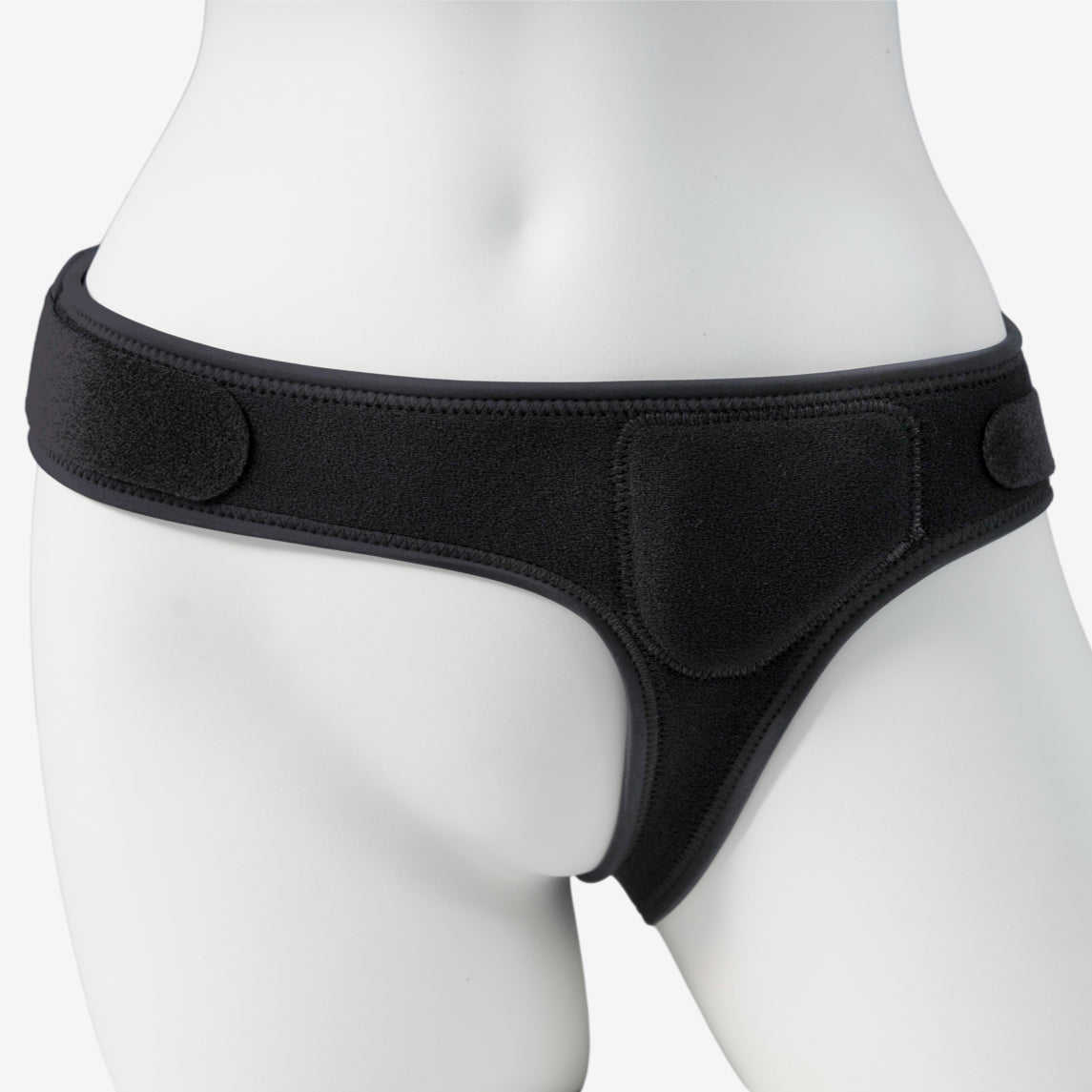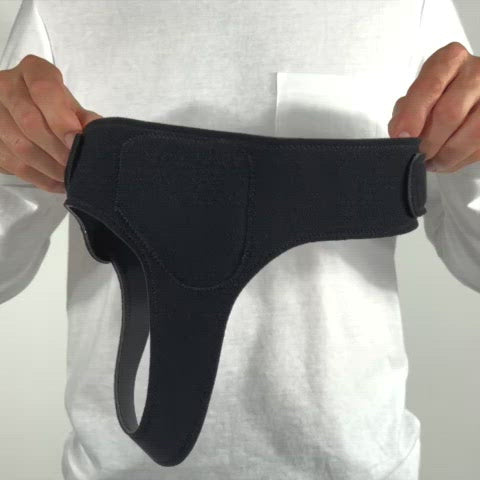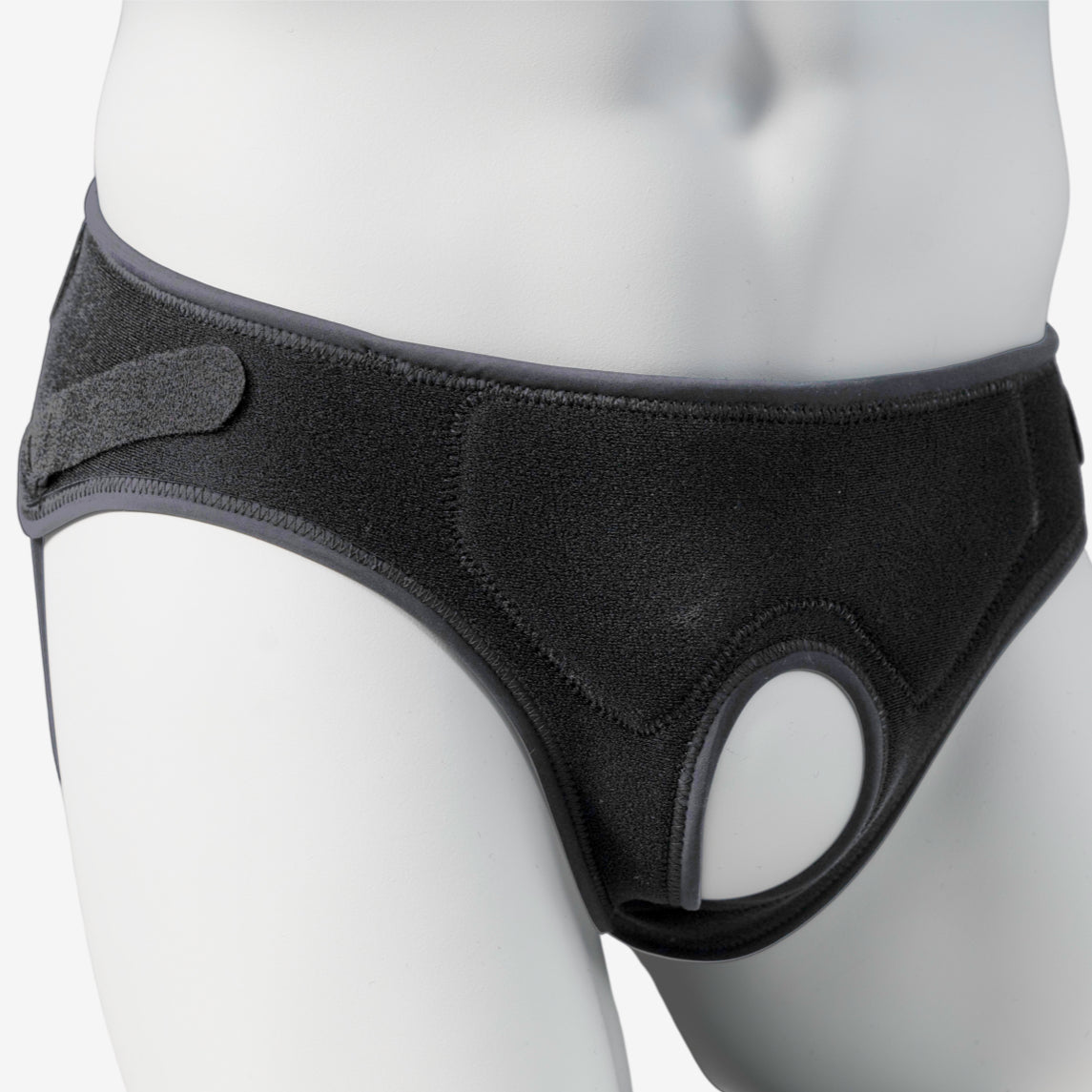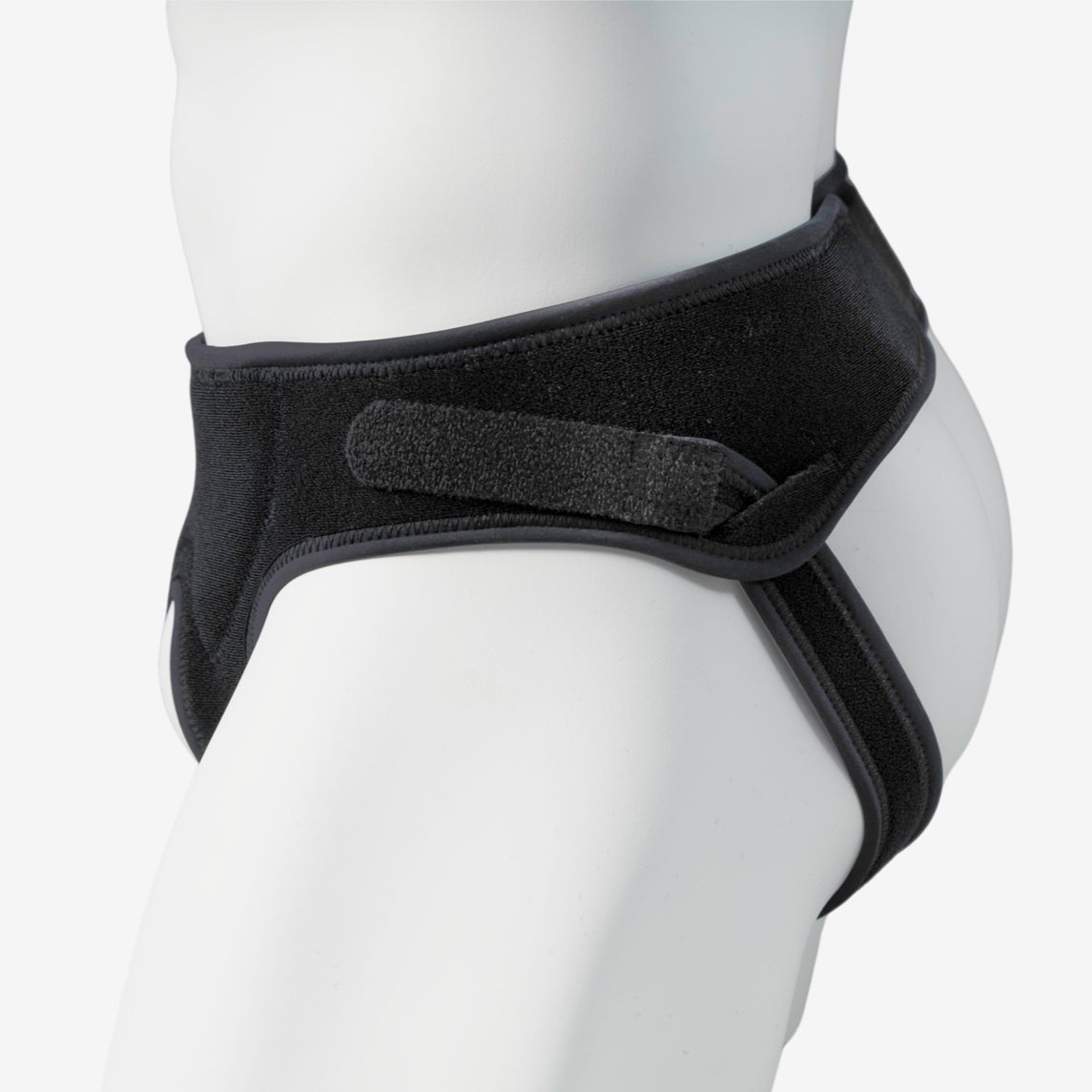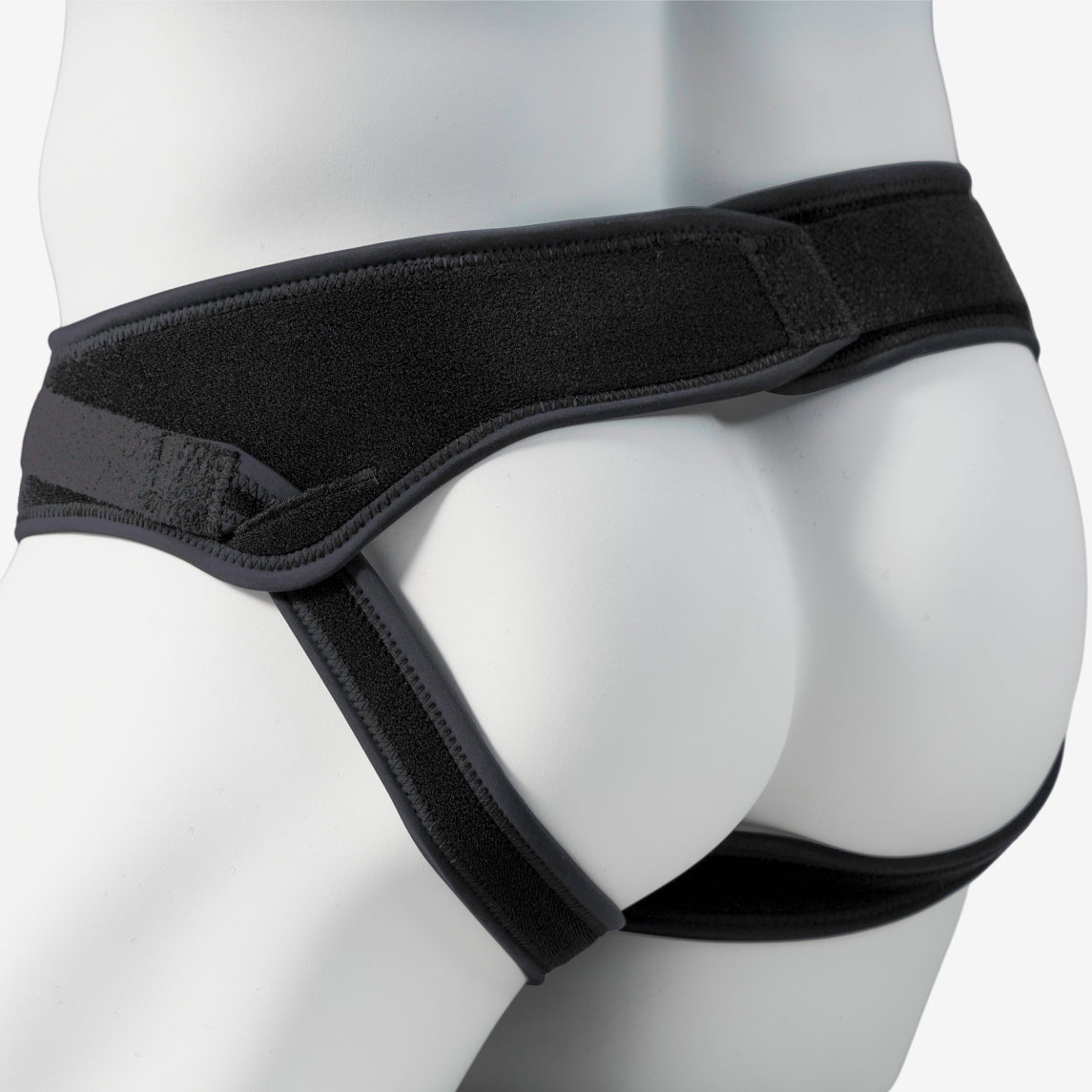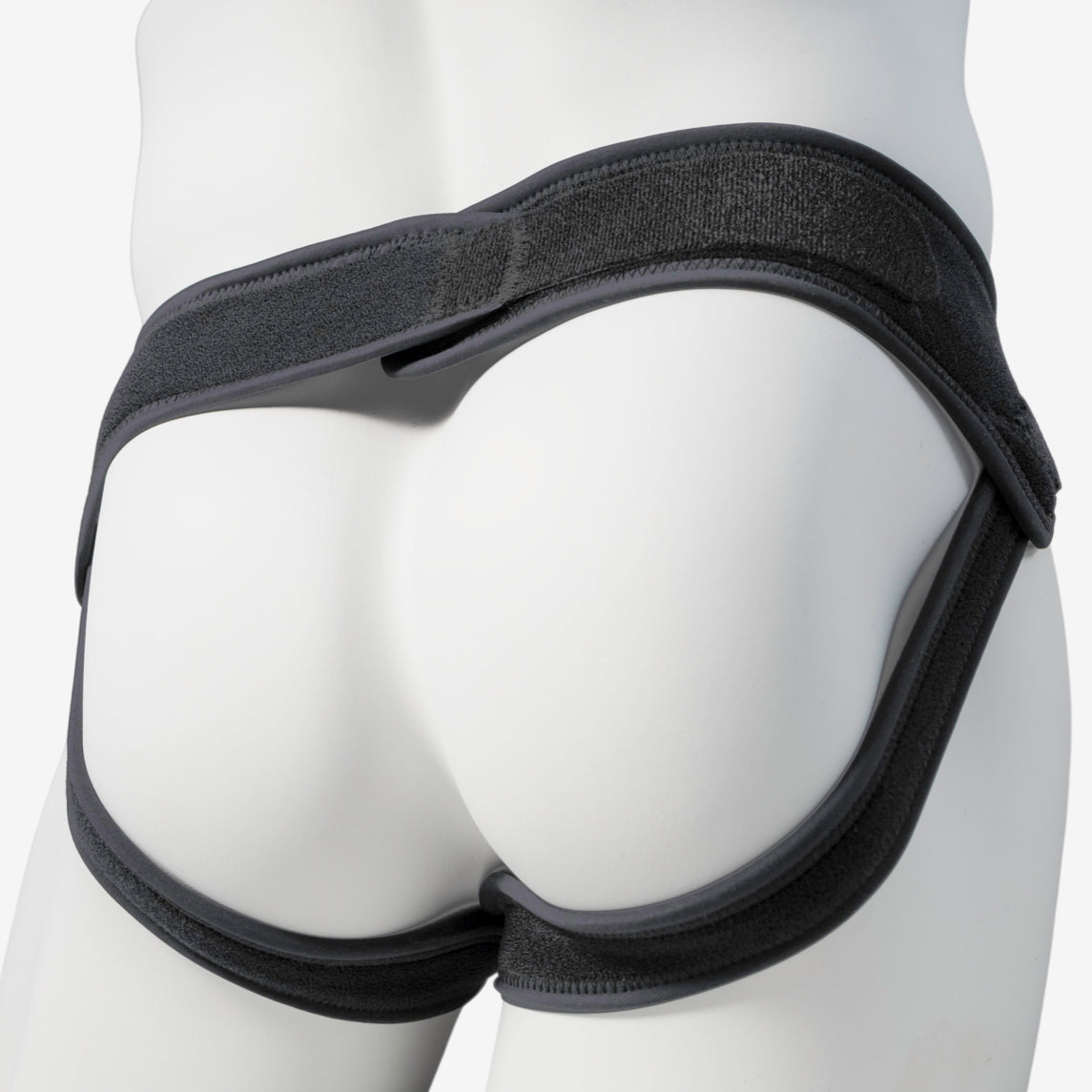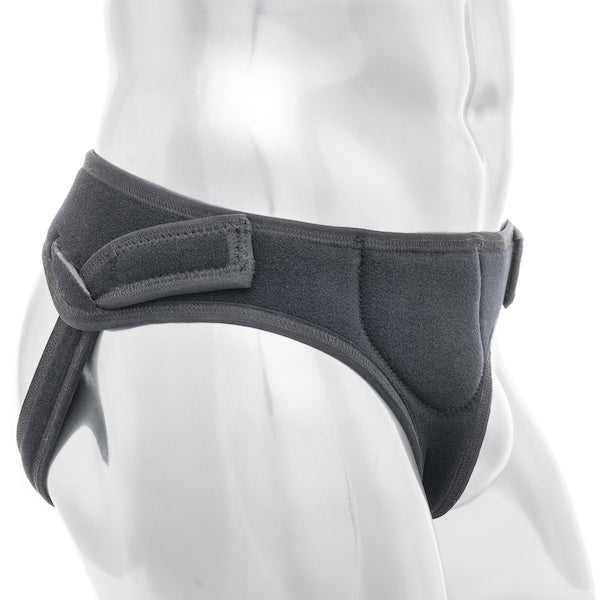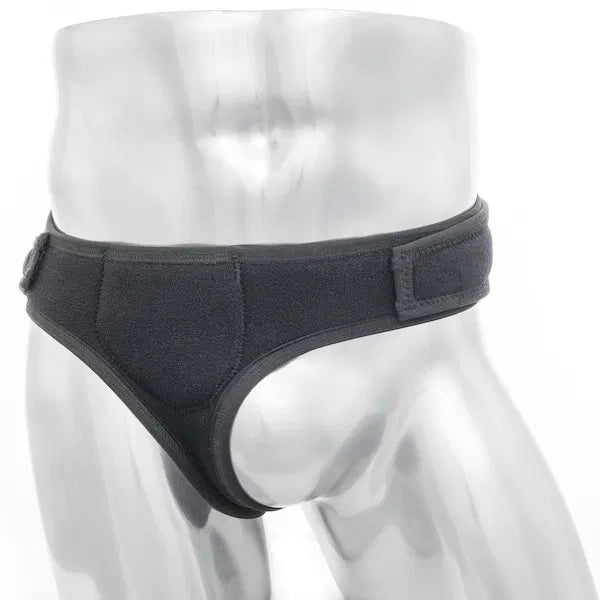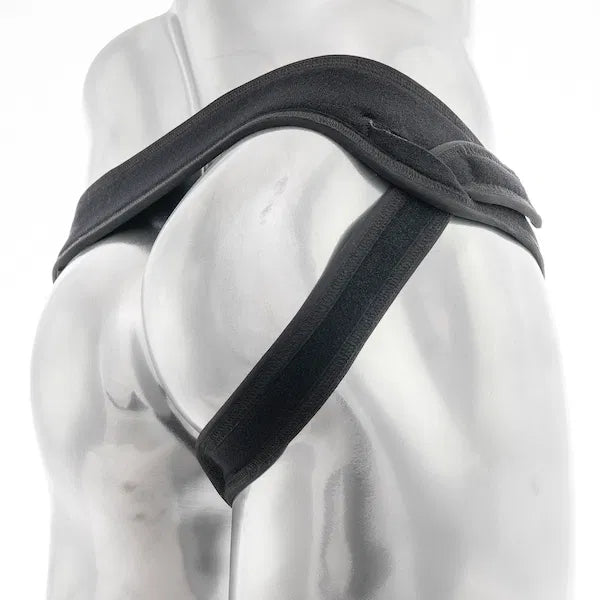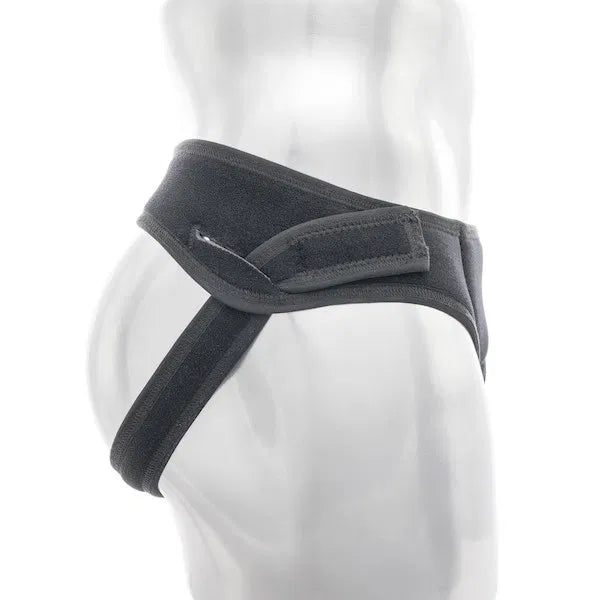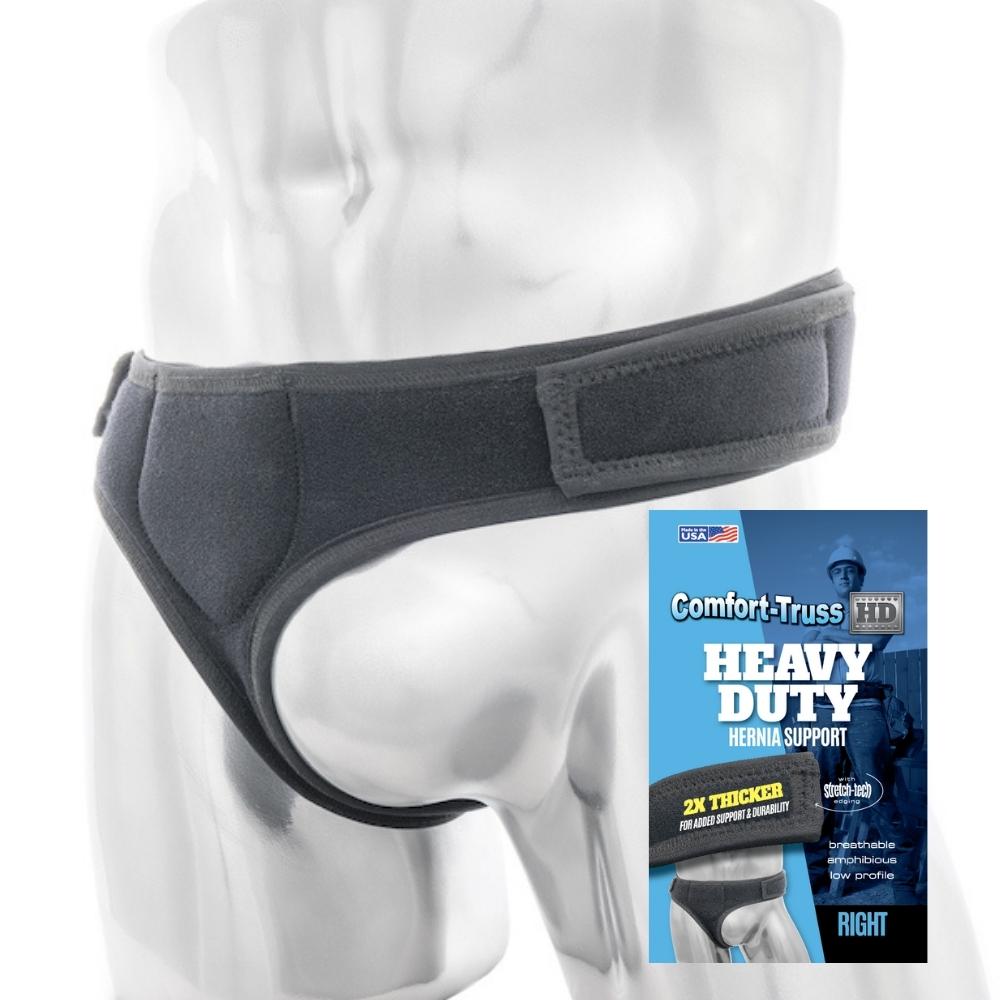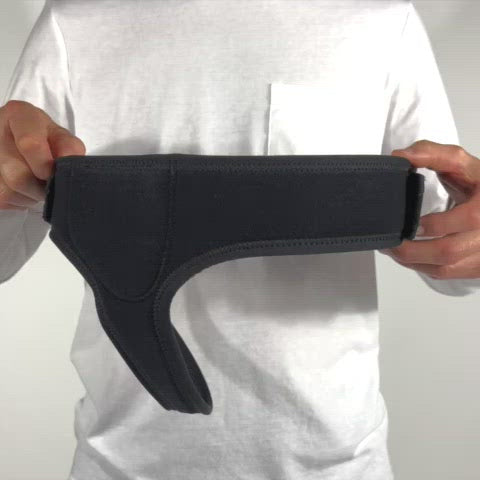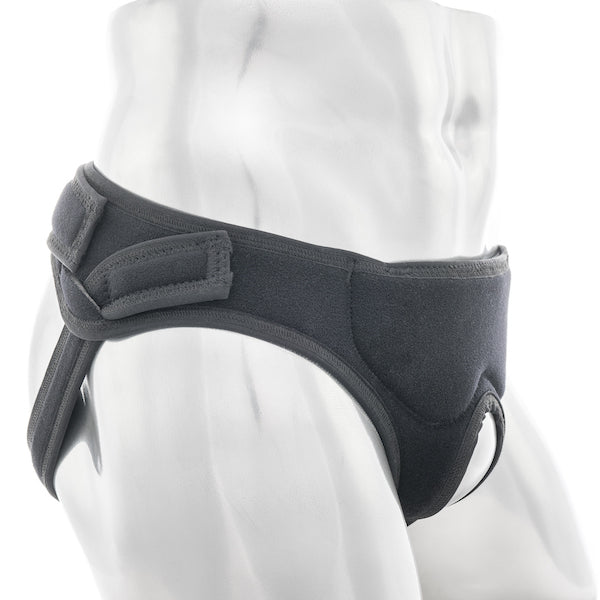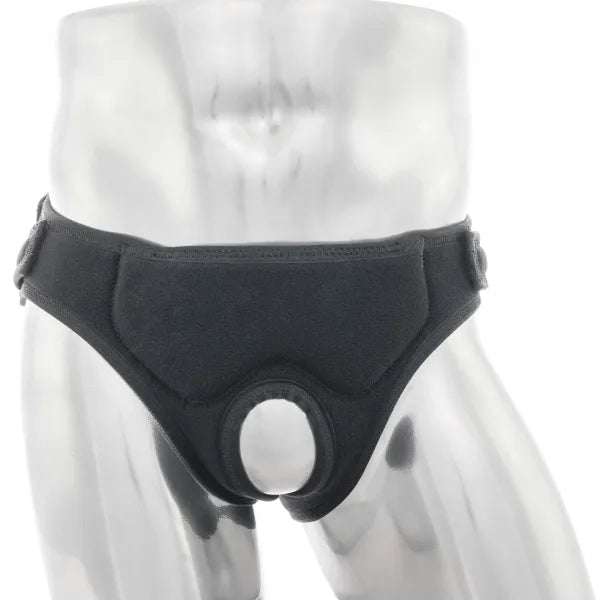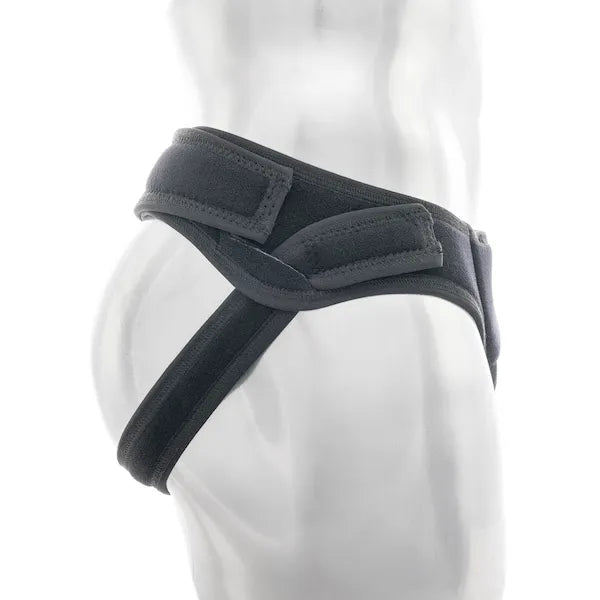What Are the Different Types of Hernias?

Did you know there are several different types of hernias that occur in different locations on the body? Hernias typically occur when parts of an organ or fatty tissue break through a muscle wall in certain parts of the body. While some hernias may cause very few symptoms, others can quickly become medical emergencies.
In this high-level article, we’ll discuss the different kinds of hernias and the symptoms of each. We’ll show you where they occur in the body and how Comfort-Truss hernia support belts can bring relief from painful hernia symptoms.
How Many Types of Hernias Are There?
There are at least eight types of hernias, ranging from common to rare. Most – three out of four hernias – occur in the groin area, which is the most common area for hernias. The two kinds of groin hernias are inguinal and femoral hernias.
Inguinal Hernia
When part of the bowel pushes through an opening in the abdominal muscles into your groin, it’s called an inguinal hernia — the most common hernia of all. The bulge may consist of fatty tissue, abdominal tissue or a loop of intestine.
You’ll know you have an inguinal hernia if you develop a visible or painful bulge in your groin or around your pubic bone. It’s easier to see and feel the protrusion if you’re standing. If you experience severe pain, fever, vomiting, abdominal swelling or heavy bleeding – or if your hernia turns dark red or purple – you need to get medical attention immediately.
There are two types of inguinal hernia:
- Indirect Inguinal Hernia: This is the more prevalent of the inguinal hernias. You may develop an indirect inguinal hernia if the inguinal canal doesn’t close before birth (not unusual in premature births). Although females can experience this kind of hernia, males are more likely to get an indirect inguinal hernia. This type of hernia can happen at any stage of life and is one of the most prevalent types of hernias in men.
- Direct Inguinal Hernia: A direct inguinal hernia may occur when people age and a weak area forms in their lower abdominal regions. Straining, lifting and coughing may contribute to forming a direct inguinal hernia. If you’re pregnant, obese or often constipated, your chances for this type of hernia increase.
Femoral Hernia
A small percentage of hernias in the groin are femoral. In a femoral hernia, tissue pushes through a weak spot in the inner thigh or groin. It may feel like a small lump. Women have femoral hernias more than men. This type of hernia rarely occurs in children.

Other Frequently Diagnosed Hernia Types
While not as common as hernias that occur in the groin, the following three kinds are not unusual:
Umbilical Hernias
When a portion of your intestine pushes through the abdominal wall by the navel, it’s called an umbilical hernia. Umbilical hernias occur most often in infants and are usually harmless. If your baby is in pain, begins to vomit or experiences discoloration or swelling at the hernia site, consult your pediatrician as soon as possible.
Hiatal Hernias
If you have chronic heartburn symptoms or gastroesophageal reflux disease (GERD), you may have a hiatal hernia. This condition occurs when your stomach bulges through a weak spot in your diaphragm. Hiatal hernias are most often diagnosed in adults who are over 50, pregnant or overweight.
Incisional Hernias
Large incisions during surgery can sometimes result in this type of hernia, which presents as a bulge near the incision site that’s more noticeable when you cough, stand or try to lift something heavy. Along with inguinal hernias, incisional hernias are the most common types of hernias in women.
Less Common Hernias
These types of hernias are seldom diagnosed, but they do occur:
- Epigastric Hernia: Epigastric hernias form in the epigastric region of the abdominal wall below your sternum but above your belly button. Most people with an epigastric hernia don’t experience any symptoms.
- Spigelian Hernias: They develop when fat tissue puts pressure on the muscle below your belly button.
- Diaphragmatic Hernia: A diaphragmatic hernia is a birth defect that occurs when a baby’s abdominal organs push through an opening in their diaphragm into their chest.
Treatment for Hernias
Once you’ve been diagnosed with a hernia, your doctor will advise what options you have for treatment. Although some hernia types may be life-threatening (like a strangulated hernia), in many cases, doctors will take a “wait and see” approach to hernias, particularly if they are small. You may be given the option of wearing hernia belts to ease your symptoms. If that’s the case, Comfort-Truss can help.
George Hirst, the founder of Comfort-Truss, was able to manage his hernia without surgery. Using a hernia belt he devised for himself, and by making certain lifestyle changes, he was able to reduce his hernia to the point where he is now asymptomatic. You can learn the techniques George used to deal with his hernia and see how they can help you. The Proactive Approach to Hernia Intervention has everything you need to head down the right path to managing your hernia.






